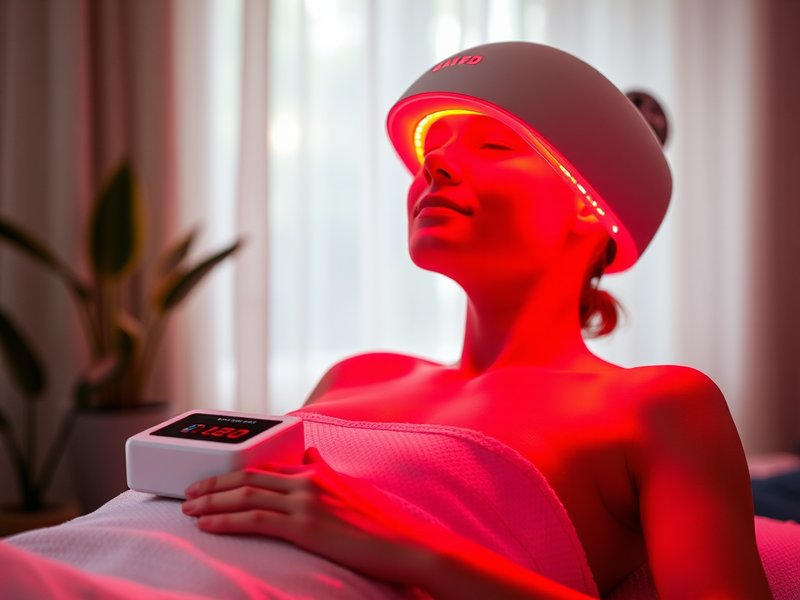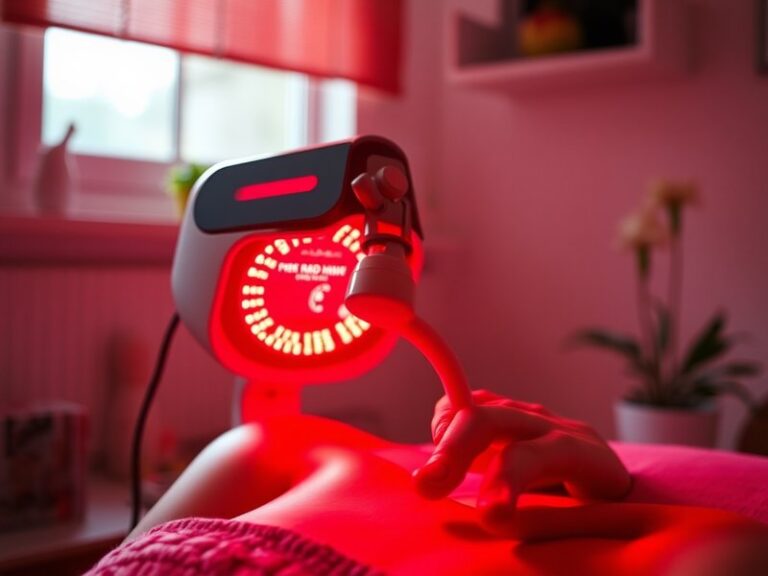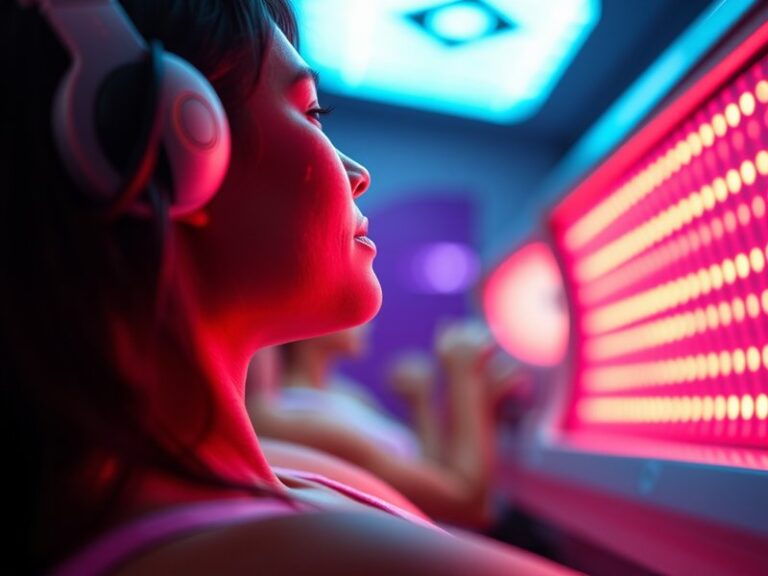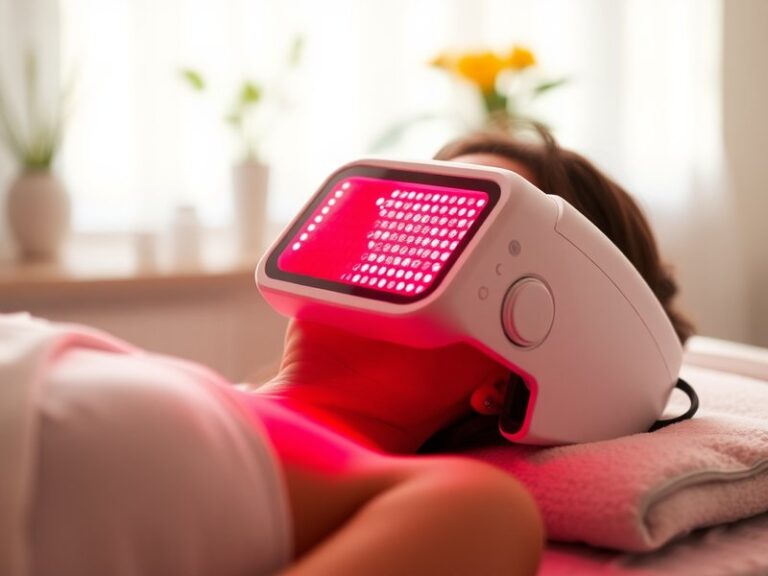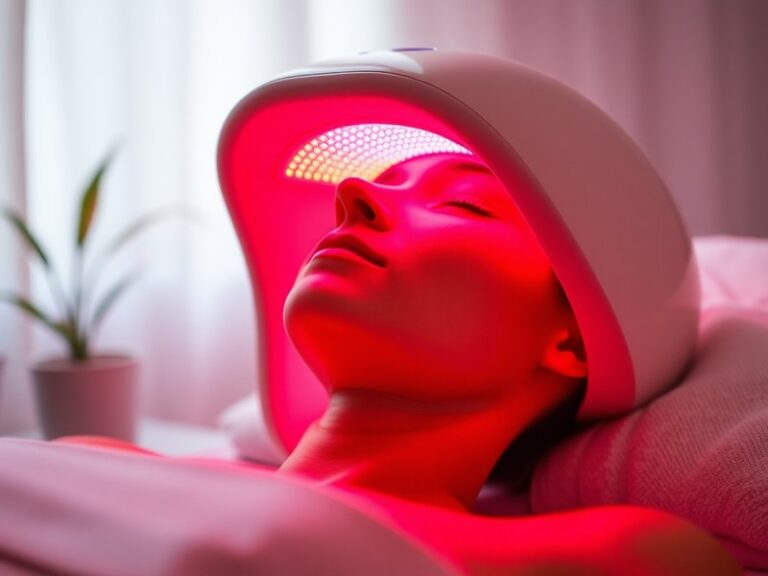Does Red Light Therapy Increase Metabolism?
Does Red Light Therapy Increase Metabolism?
Have you ever wondered if there’s a way to boost your metabolism effortlessly? Red light therapy has emerged as a popular treatment in recent years, heralded for its potential health benefits, including metabolic enhancement. In this article, we will explore how red light therapy works, its effectiveness in increasing metabolism, the associated benefits, considerations, alternatives, and more.
Key Takeaways
- Red light therapy may help increase metabolism by enhancing cellular energy production and promoting fat oxidation.
- Users report benefits beyond metabolism, including improved skin health, pain relief, and better recovery from exercise.
- While promising, more research is needed to establish definitive effects on metabolism and to understand long-term implications.
What is Red Light Therapy?
Red light therapy (RLT) involves utilizing low-wavelength red light to penetrate the skin and stimulate biological processes. The therapy typically employs near-infrared light, which is thought to affect cellular mitochondria, leading to increased energy production in the form of adenosine triphosphate (ATP). Primarily used in physical therapy and dermatology, RLT is gaining attention for potential systemic benefits, including impacts on metabolic processes.
RLT is non-invasive and typically performed using specialized devices, such as LED panels or laser equipment. Safe and painless, it has captured interest from both the scientific community and the general public, especially among individuals seeking alternatives to conventional metabolic enhancers.
Discover the analysis in Buying Red Light Therapy: Key Considerations
What are the Benefits of Red Light Therapy?
Exploring the advantages of red light therapy reveals a spectrum of potential health benefits, particularly related to metabolic health.
For more, see Red Light Therapy Frequency
Increased Cellular Energy Production
RLT is believed to enhance ATP production in cells. More ATP means increased energy availability for metabolic processes, which could lead to an uptick in metabolism.
Enhanced Fat Oxidation
Some studies suggest that RLT may promote fat burning by stimulating the adipocytes (fat cells) to mobilize stored fat for energy. This effect could be particularly beneficial for those looking to manage their weight.
Improved Recovery and Reduced Inflammation
RLT is often used to alleviate muscle soreness and heal injuries. Improved recovery speeds can support more consistent exercise, which in turn can have a positive effect on metabolism over time.
Skin Health Improvements
Although not directly related to metabolism, the skin-rejuvenating benefits of RLT can enhance the overall appearance of individuals, potentially motivating them to stay active and engaged in healthier lifestyle choices.
Is it Possible to Increase Metabolism with Red Light Therapy?
While preliminary evidence indicates that red light therapy may indeed boost metabolism, conclusive research is still needed. Various studies have shown that RLT can result in increased energy production and fat oxidation, but results can vary based on numerous factors including treatment duration, intensity, and individual response.
What are the Advantages of Increasing Metabolism with RLT?
The advantages of using red light therapy to boost metabolism include:
- Non-invasive treatment option with minimal side effects.
- Potential to support weight management and fat loss.
- Enhancements in energy levels that can improve overall activity levels.
What are the Disadvantages of Increasing Metabolism with RLT?
Conversely, there are some disadvantages to consider:
- The effects can vary widely from person to person, which makes it difficult to predict outcomes.
- RLT devices can be expensive and may require regular sessions for substantial results.
- Limited long-term research on sustained metabolic effects.
What are the Things to Consider Before Trying Red Light Therapy?
Before starting red light therapy for metabolic enhancement, several important factors should be carefully weighed.
Consult with a Healthcare Provider
It’s crucial to discuss any plans to undergo RLT with a qualified healthcare professional, particularly if you have pre-existing medical conditions or are pregnant.
Device Quality and Type
Not all RLT devices are created equal. It’s important to ensure that you use an FDA-cleared and clinically validated device to obtain the best possible results safely.
Treatment Frequency and Duration
Determining the appropriate frequency and duration of treatments is essential—too little may yield no results, while too much may not be beneficial.
Understanding Personal Goals
Clearly define what you’re hoping to achieve with RLT. A tailored approach can help set realistic expectations and improve motivation.
What are the Alternatives to Red Light Therapy?
If red light therapy isn’t the right fit, there are several alternative options for increasing metabolism.
High-Intensity Interval Training (HIIT)
HIIT workouts can effectively elevate metabolic rates. Short bursts of intense exercise followed by recovery periods encourage greater calorie burn and efficient fat utilization.
Strength Training
Building muscle mass increases resting metabolic rate as muscle tissue requires more energy to maintain than fat tissue. Strength training can thus be a beneficial complement to any metabolism-boosting routine.
Dietary Adjustments
A balanced diet rich in protein, fiber, and healthy fats can further support metabolic functions. Foods that promote thermogenesis, such as green tea and chili peppers, may also be beneficial.
Adequate Sleep and Stress Management
Both sleep quality and stress levels can heavily influence metabolic functions. Prioritizing good sleep hygiene and stress-reduction techniques can significantly enhance metabolic health.
Conclusion: Is it Recommended to Use Red Light Therapy to Increase Metabolism?
In conclusion, while red light therapy shows promise for increasing metabolism, further research is necessary to fully understand its effects and establish standardized protocols. It may be a beneficial addition to a holistic health regime that includes a balanced diet, regular exercise, and proper self-care. Consulting with healthcare professionals and combining multiple strategies could yield the best results for anyone pursuing improved metabolic health.
Frequently Asked Questions
Does red light therapy have any side effects?
Red light therapy is generally considered safe, with minimal reported side effects. Some users may experience temporary redness or soreness. Always consult with a healthcare provider to discuss any concerns before starting treatment.
How often should I use red light therapy for metabolic benefits?
The optimal frequency can vary based on individual goals and device specifications, but many users find benefits with sessions ranging from 10 to 30 minutes, 3 to 5 times a week.
Can RLT help with weight loss?
While evidence suggests that RLT may aid in fat oxidation and energy production, it should not be viewed as a standalone solution for weight loss. A comprehensive approach involving diet and exercise is critical for achieving sustainable results.
Is red light therapy suitable for everyone?
Not necessarily. Individuals with certain conditions, such as photosensitivity or those taking medications that affect light sensitivity, should consult with healthcare professionals before using RLT.
What kind of devices should I look for?
When choosing a red light therapy device, opt for FDA-cleared products that emit appropriate wavelengths (typically between 600-900 nm) and have positive user reviews or clinical backing.
